
Hugo Gernsback was born in 1884 in Luembourg and immigrated to the US in 1904 to market an improved dry cell battery, and later became a citizen. In that same year he opened a small mail order business called “The Electro Importing Company.” All he did was an immediate success. At some point he opened his main offices and a laboratory at 233Z Fulton St., New York City, and a retail store at 69 W. Broadway as well. Business was quite good so all locations became retail sales stores including retail store # 2 with an address # 317, but it is unclear what street it was on. Perhaps on Fulton Street as well, or a rear of the building on 2333 Fulton that was given a different address. Gernsback’s wireless products, his science fiction writings, and business acumen, which was not always received with accolades, have been covered again and again, so I will concentrate on the “Electro Audion.” In any case, the EIC building on Fulton Street was torn down to make way for the construction of the World Trade Center. The EIC building on Broadway was not affected. It should be mentioned that Sidney Gernsback, Hugo’s brother, worked for Electro Importing Company as an electrical engineer.
See below for a few pictures of The Electro Importing Company exterior and interior & 1 article in the Electrical Experimenter. All but 1 can be clicked twice for larger views.
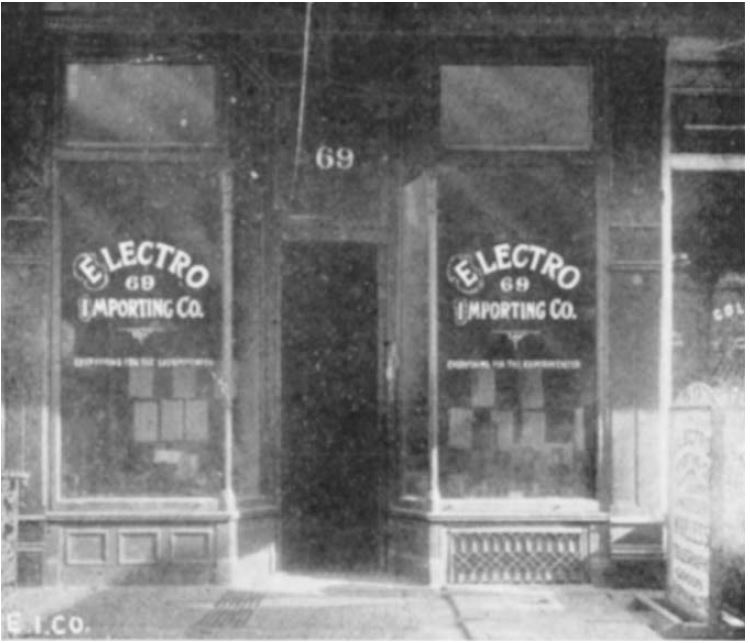
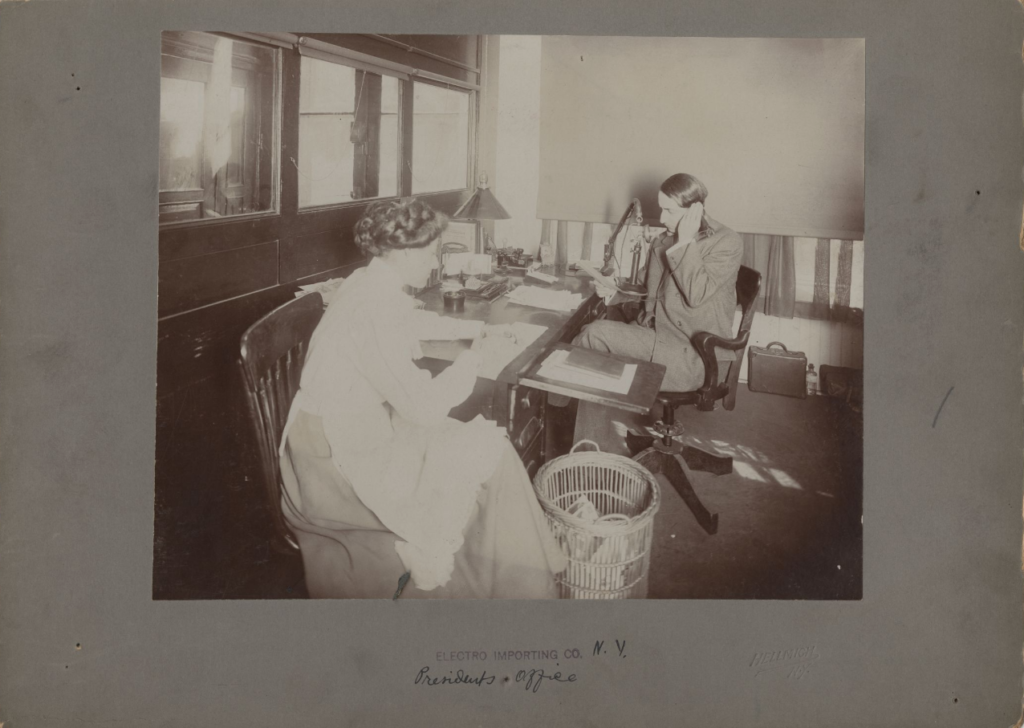
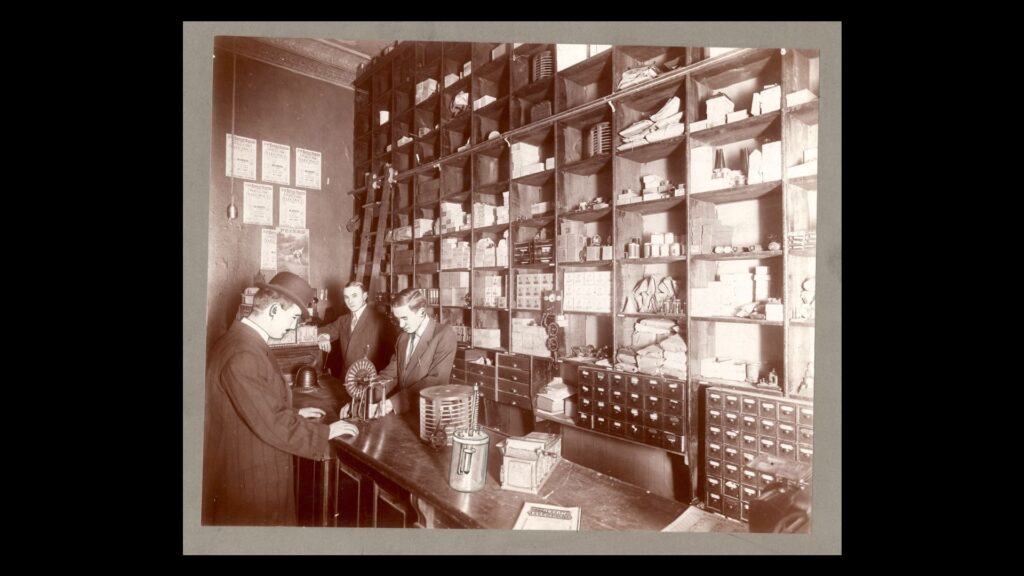
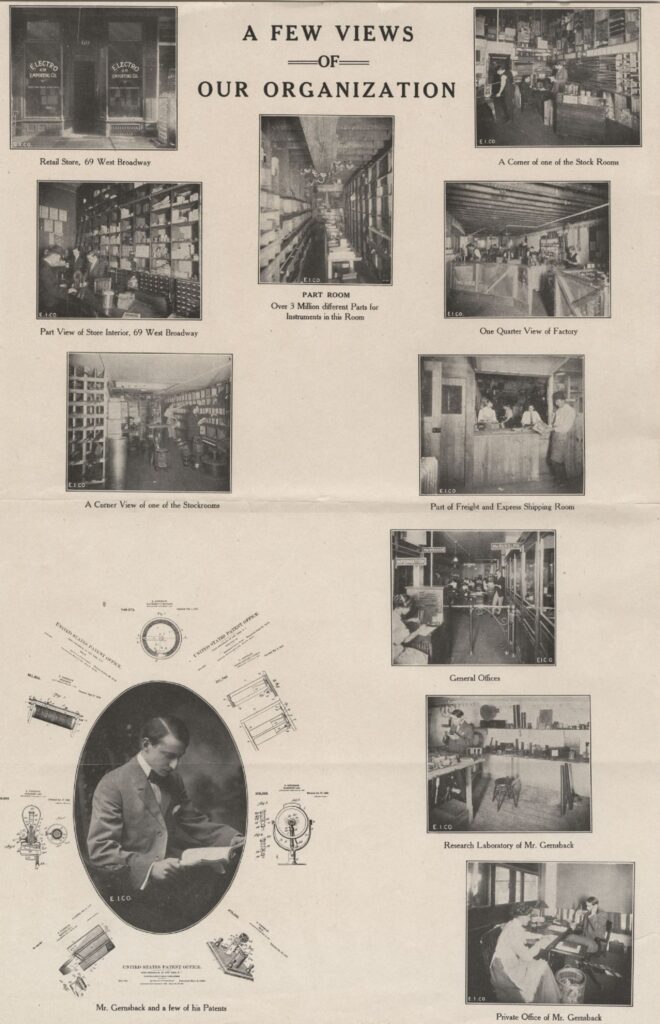
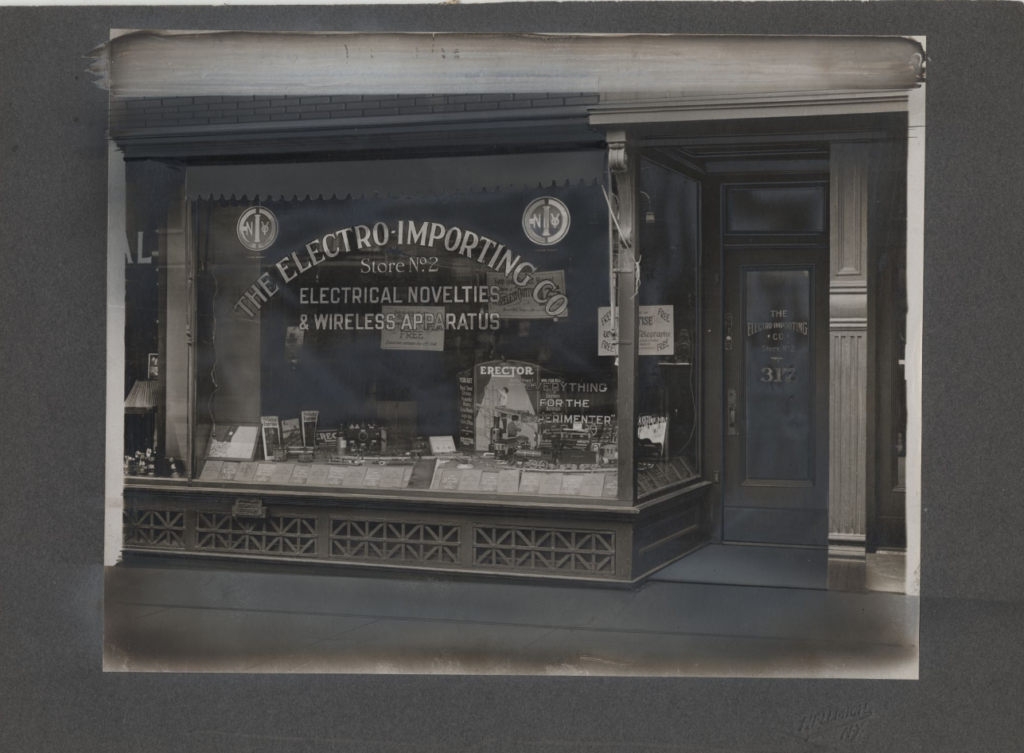

H. W. McCandless made tubes for quite a few different individuals and companies, according to the specs they provided. See Fig. 1 below for the list of people and companies that McCandless sold to. The list is surprisingly varied from De Forest to Western Electric, etc. The list starts in 1911 as it seems his records previous and after 1913 were destroyed in a fire. Also note the large number of cash sales for which no mention is made of the buyers. As can be seen, 459 audions were purchased by The Electro Importing Company in 1911-1913. It seems Gernsback, and his head electrical engineers, Sidney Gernsback, Harry Secor, and A. Lescarboura, had some very specific ideas on what type of tube they wanted. McCandless was to make them spherical with a standard candelabra screw base, the two filament loops were to made to burn separately, and to be single plate and grid, the same as many De Forest audions. Some early De Forest audions had tungsten filaments but this was idea was given up on quickly as the tungsten did not give off enough electrons, so the Hudson wrap was introduced but was expensive to make. From the 3 examples I have seen of the Electro, that is where the similarity ends. The filament material in the Electro Audions was to be made of tantalum rather than tungsten and at least 2 times longer. This presented a problem as McCandless found the tantalum filaments, when heated to incandescence, tend to droop and either break off or short to the grid or plate and to avoid the extra expense, the engineers at Electro suggested 2 support arms to exit the press and support the filaments at the top most point. This author cannot even begin to state how well this did work or did not. I can only say it must have helped. The way the audion was to be mounted and the proper voltages applied avoided much expense, as in the De Forest RJ-4 that was a larger control box. A plain pine board, painted flat black was made to a size of 5- 1/4 X 3-1/2 inches. This size of this board is stated in an add placed in Modern Electrics in July, 1911 and shown in Fig. 2. below. The layout of the board is as such- A special female candelabra socket was made and mounted through a hole in the board in such a manner that it protruded about a 1/2 inch above the top surface so the base on the audion could be screwed into it. 5 special connectors were placed on the top of the board with holes in the board and bolted to the bottom side – 1 of these connectors each for the plate & grid, 1 each for one loop of the 1 filament, and the last connection for wiring the second loop of the filament to burn both filaments at the same time. All the connectors, female candelabra socket, and wiring were counter-sunk into the bottom so it would lay flat. A black mesh material was glued to the bottom to protect the wiring, with an inspection paper tag attached. Finally, a 1/2-inch brass washer with an early Electro Importing logo was nailed into the board. It stated E. I. Co, New York, and Patent Pending. I have seen this type of Electro logo on certain other apparatus they made within their Company on items they thought should have a patent. I think they would have a problem with this patent because they did not make the audion, but it is possible they could receive the patent on just the mount. I have searched for this patent and it was not found. Of course, this is not all that would be needed to apply the correct voltages so Electro suggested several items to accomplish this. See Fig. 3 below for how the under- board wiring was done on the Electro Audion that appeared in the EIC book called “Wireless Course in Twenty Lessons.” See Fig. 4 & 4A below for the 2 page article called “The Vacuum Detector” written by Henry Secor of EIC that appeared in the Electrical Experimenter. On page 2 of that article, it explains how the extra devices purchased from EIC should hooked up in order for the audion to function properly. Fig. 5 shows the actual under-board wiring on my original Electro Audion.
Right click on the pictures below for a larger view. All but 1 can be clicked on twice so look for the + sign to enlarge even more.
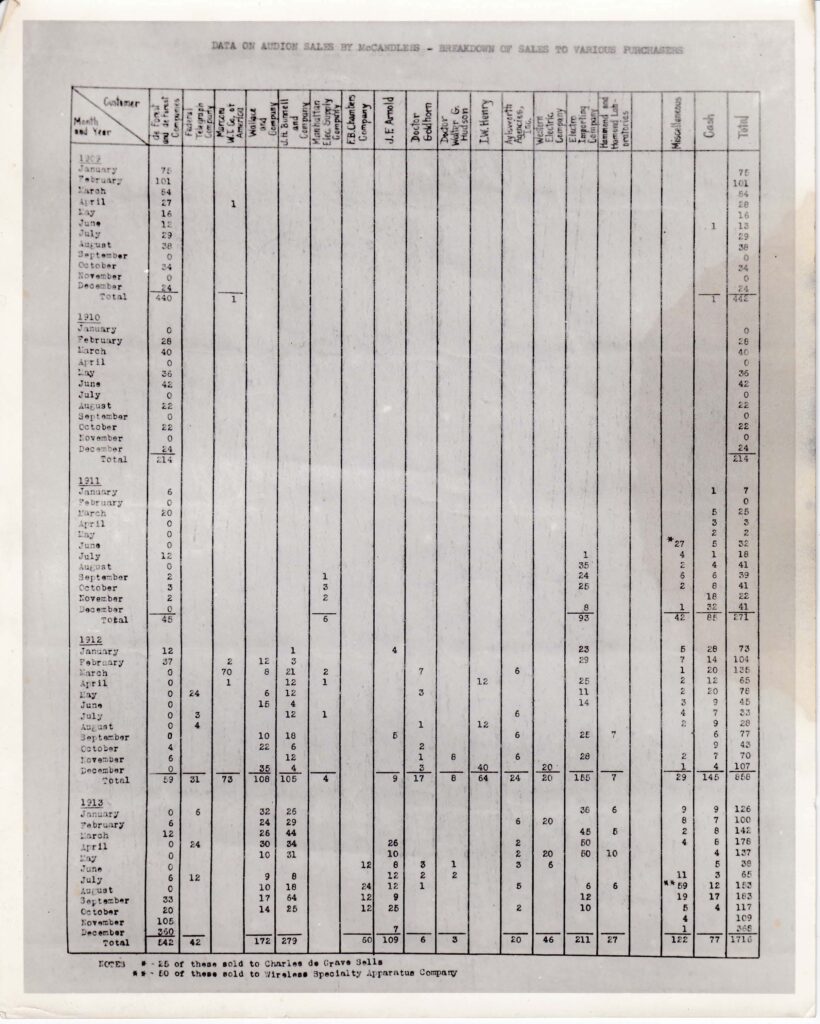
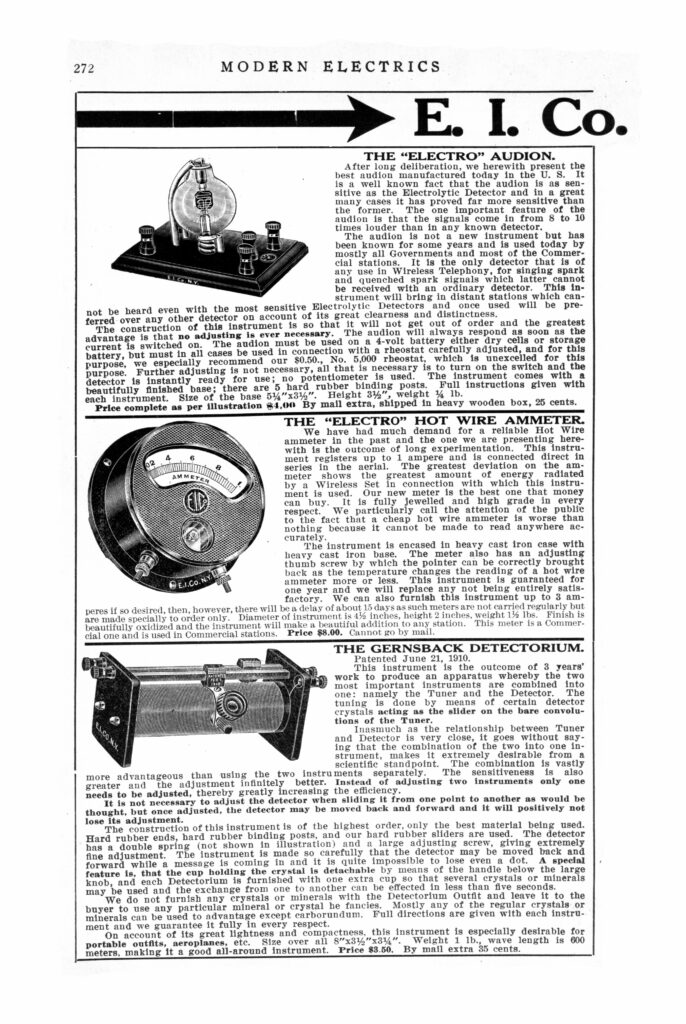
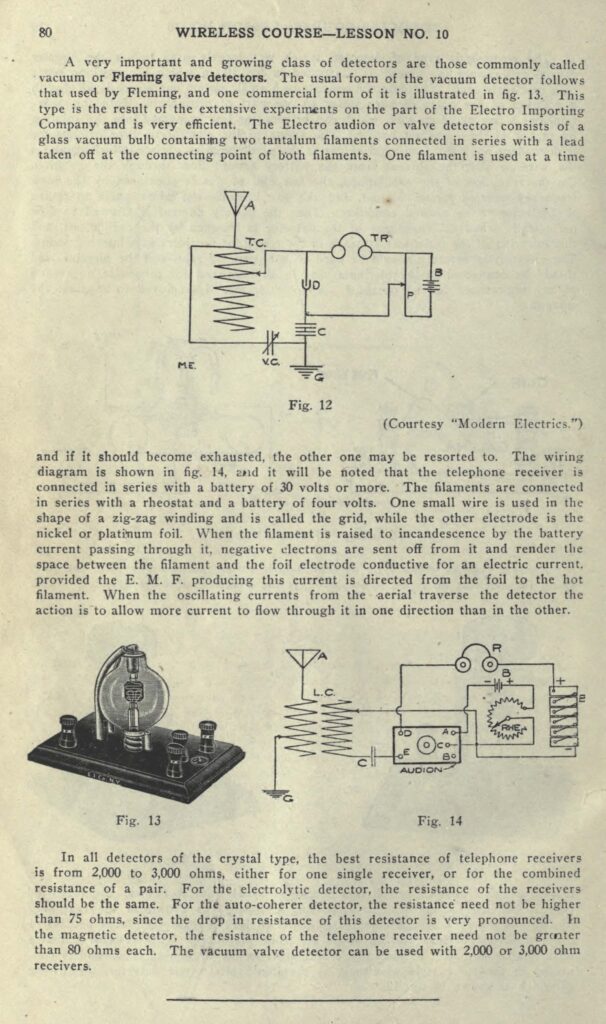
More Below
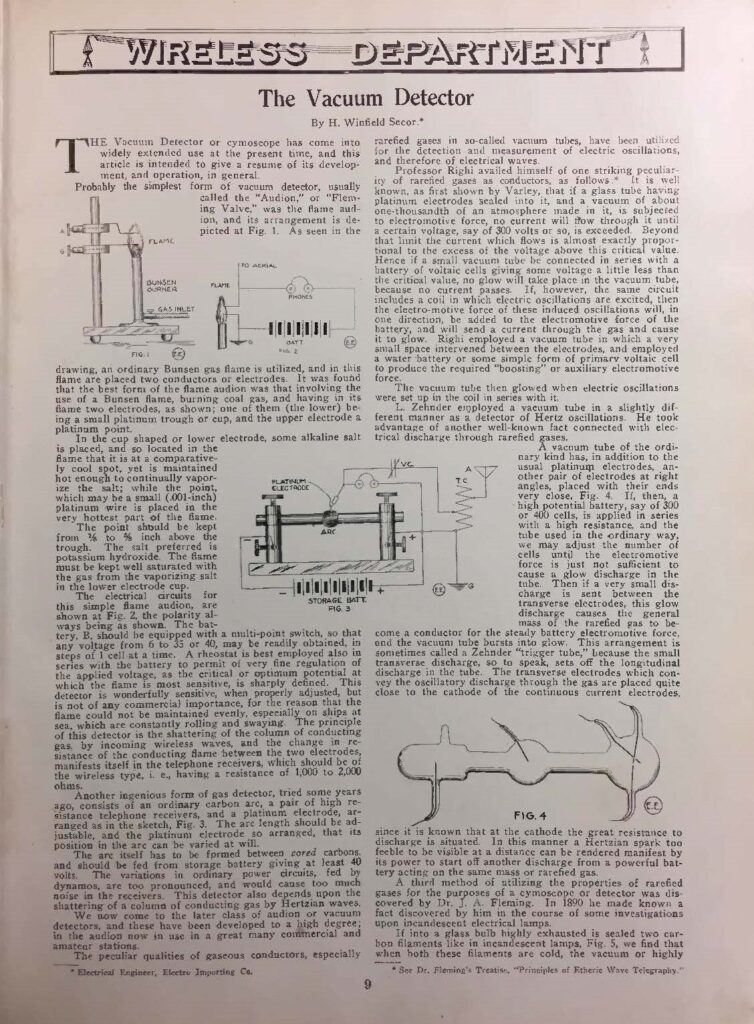
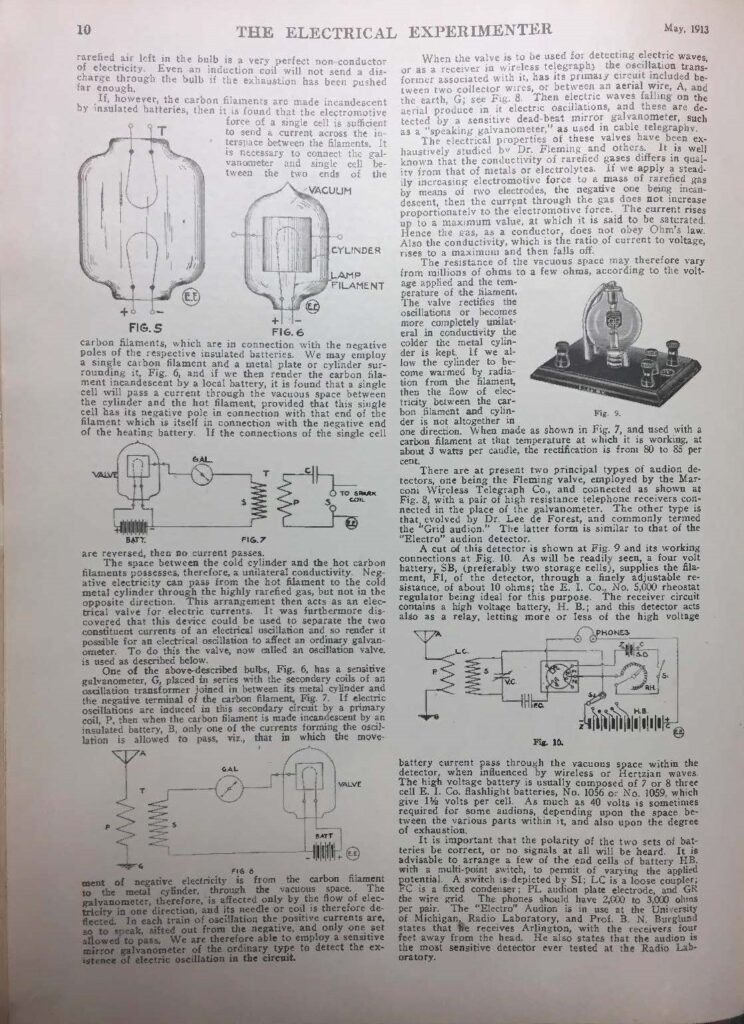
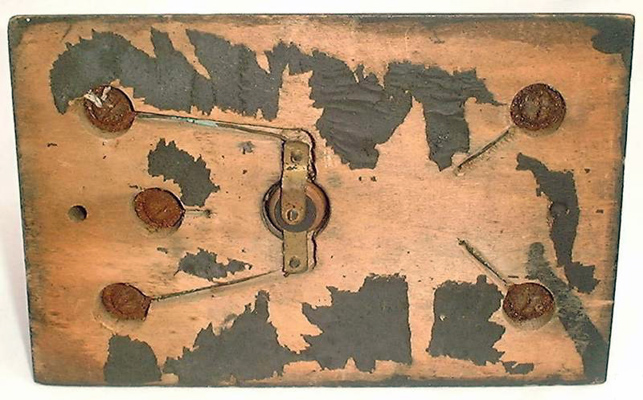
Concerning the purchase of my original Electro Audion have mostly left my memory but I do recall it was in the mid-80’s. I bought the audion and arranged to pick it up in New York around the time of a AWA meet within a 100 miles or so. After picking up the audion and attending the meet, Al Jesperson, my traveling buddy, did what we normally did- took our items to our storage facility on Long Island, took pictures of those items. We left 1 set of pictures in storage and took 1 set with us. Years later, we traveled back to the Island, Al sold all he had there to a local collector and I took all my items home. Still years later, I began to unpack my tubes but so far, I have not found the Electron Audion. Still a few places to look but I have only pictures left that I show below in Figs. 6-9. As can be seen, it was in poor condition. 1 filament was broke, the insulation had degraded, the brass tag with the EIC logo was missing as was the black paper covering the bottom and the inspection paper.
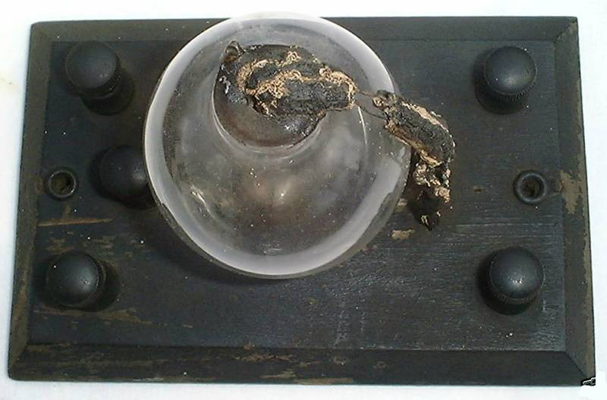
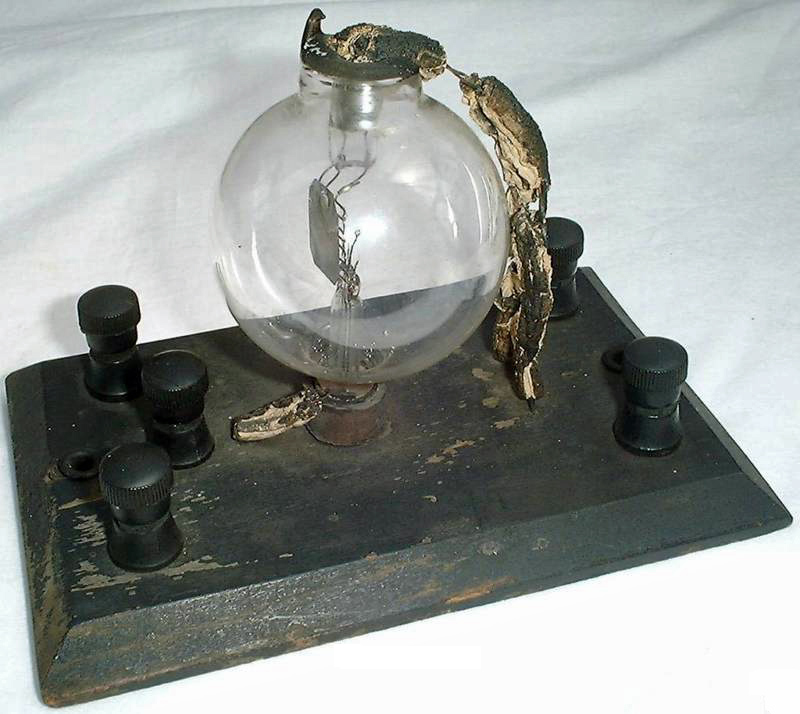
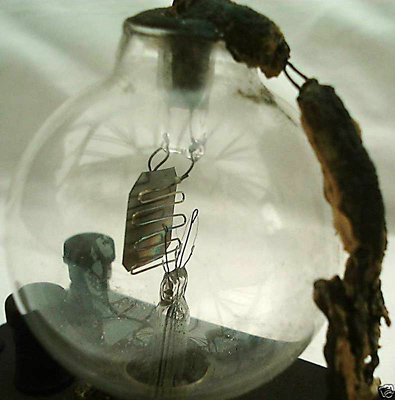
I did find in my storage box a second Electro Audion I purchased long ago as well and presented a picture of on groups.io not long ago. This tube has both filaments intact but the plate and grid wires along with the second loop of the filament exiting from the base were broke off, and to be clear, this is just the audion, no board. Not finding the original Electro I decided to make a repo board to house it. I made the repo in such a way as to hide the fact that the wires were missing as can be seen in the pictures in Figs. 10-14. In order to complete the repo, I needed a picture of the EIC logo and the inspection paper tag which I found pictures of in the Smithsonian. I made the paper tag myself and had a man in Lima, Peru make the decal. Ira on groups.io provided the connectors I did not have. If I find the original Electro Audion that would be a bonus but this smooths the loss for now. Any collector out there own an Electro Audion? And no. I am not turning into Phil Weingarten!. Just a nice spot to park my audion.
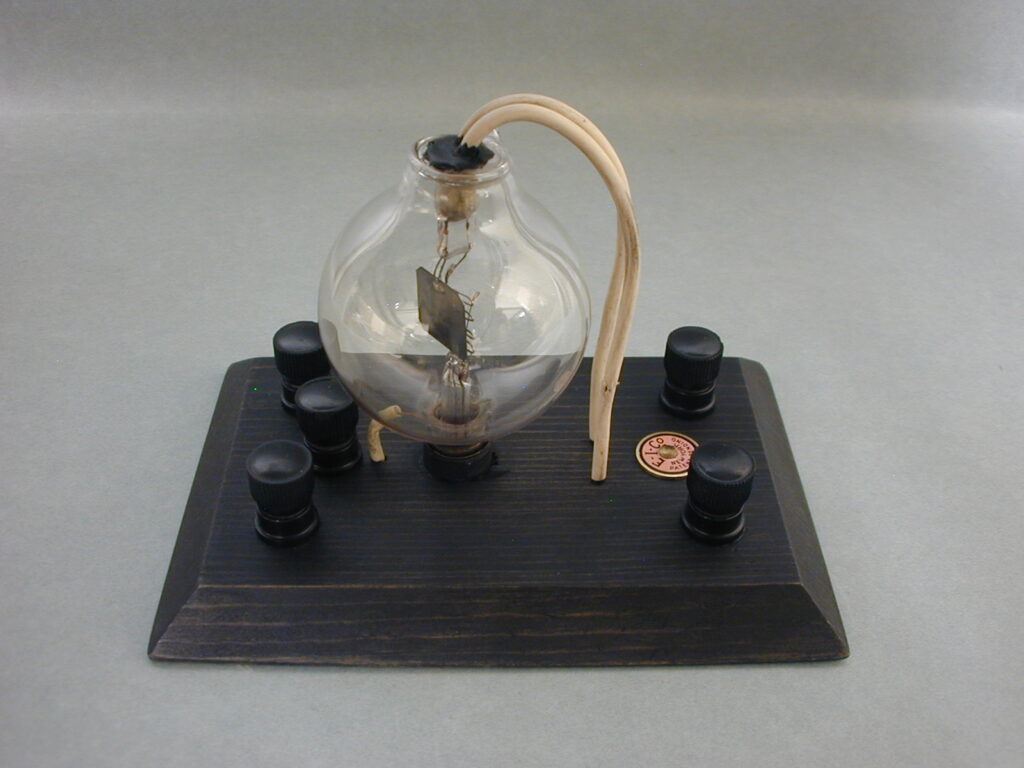
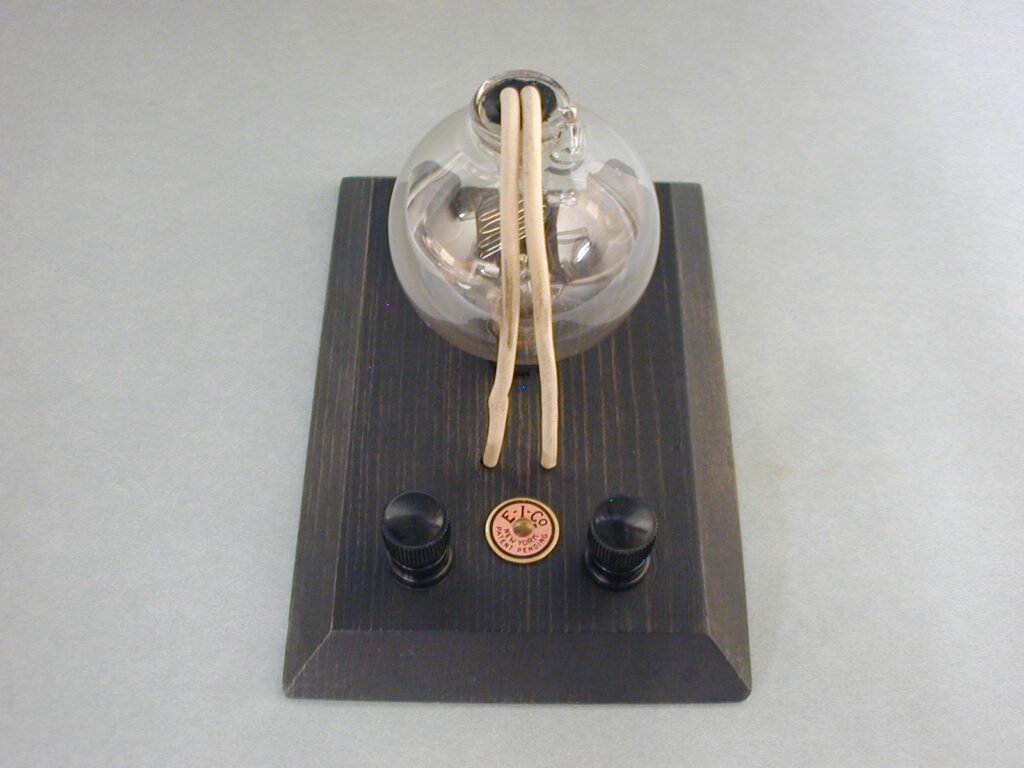
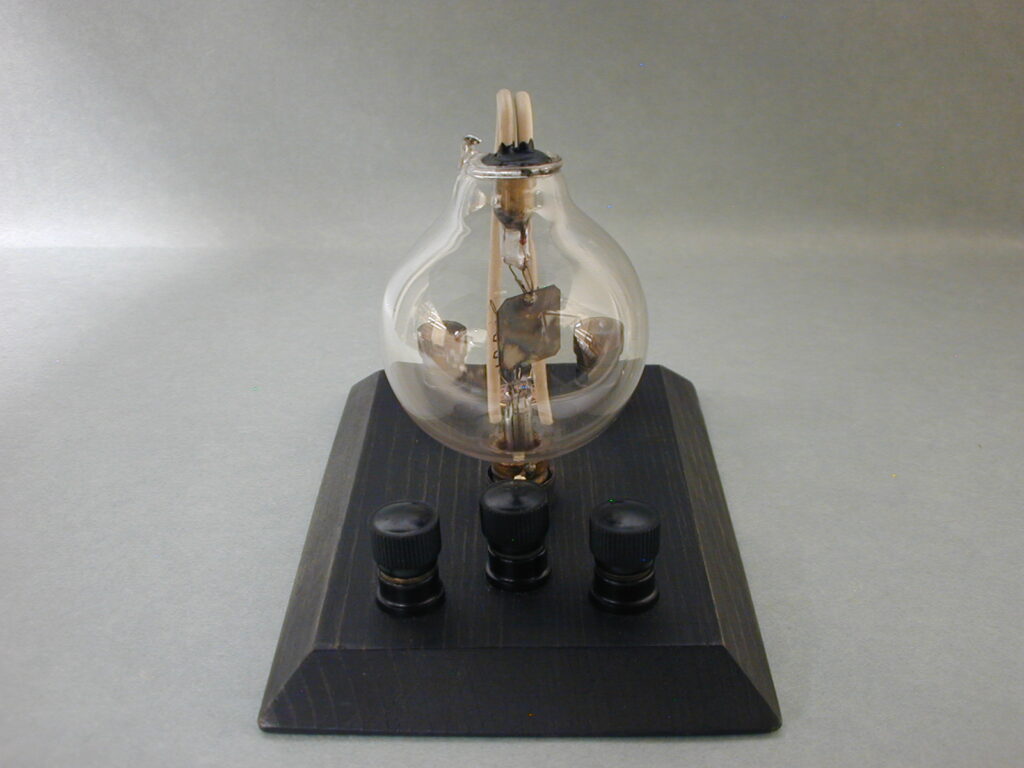
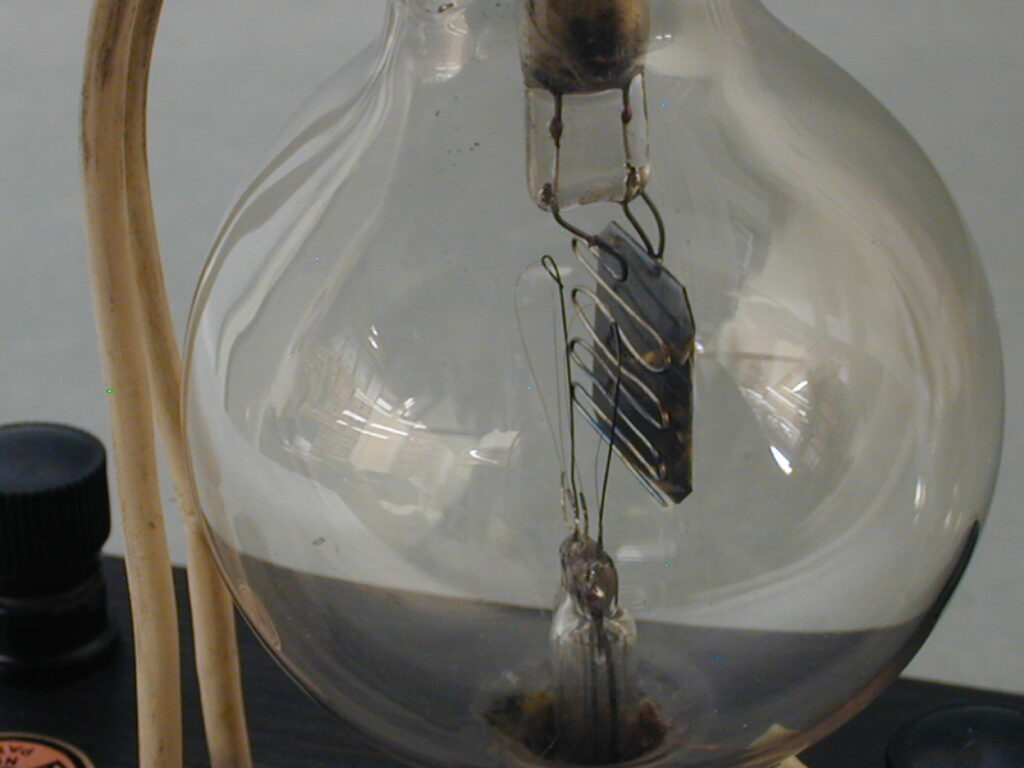
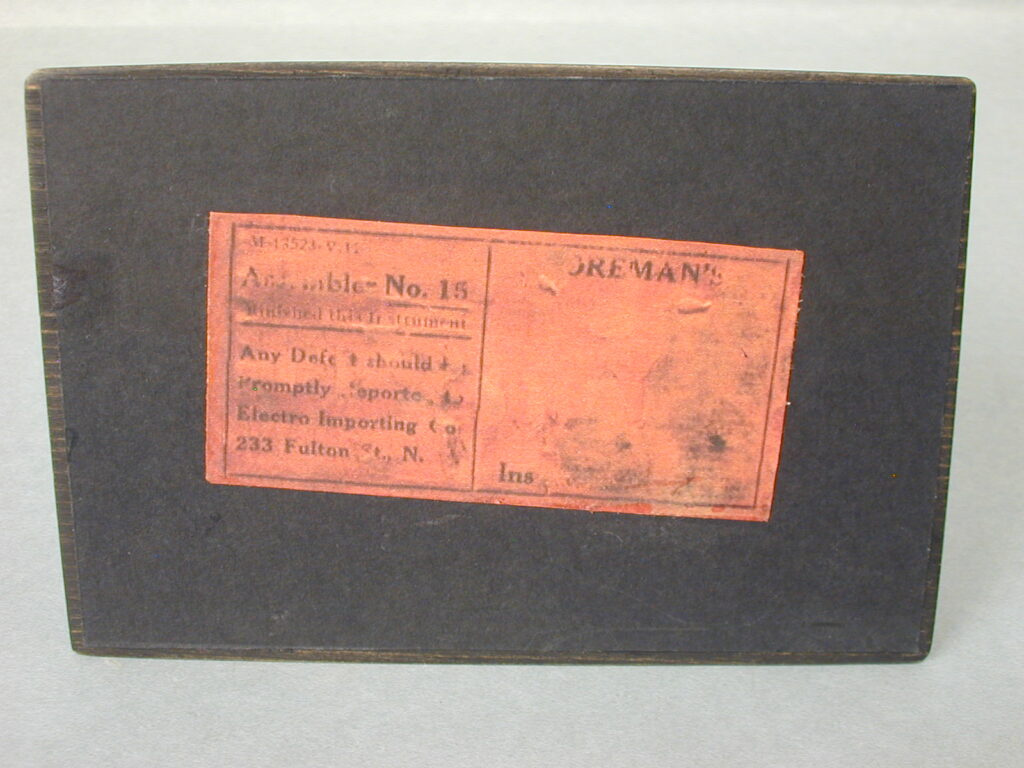
As can be seen with both the Electron Audions above, they have a single grid, single plate, and double filaments. Of the three known Electron Audions, all three are made in this manner. With so few examples, it is not known if any were made with double grids and plates?
Sources: Double click on hyperlink named EI_MT in blue below.
“Electrical Experimenter”, magazine.
“Modern Electrics”, magazine
“Saga of the Vacuum Tube”, Gerald Tyne, 1977.
Syracuse University, Hugo Gernsback holdings, provided several pictures of Electro Importing Company. permission not needed but asked for.
Smithsonian Institute, my source there gave me measurements of the Electro board (to be certain) & diameter of the logo, along with the picture shown here: EI_MT
Tyne & Vanicek paper collection, scans made by this author shown in Fig. 1 above.
Electron Importing Company Publication, “Wireless Course in Twenty Lessons.”, used in fig. 3.
Figures 5-14, pictures in this authors collection.
Electro Importing Company catalog # 21, May, 1912, original is in this authors collection.
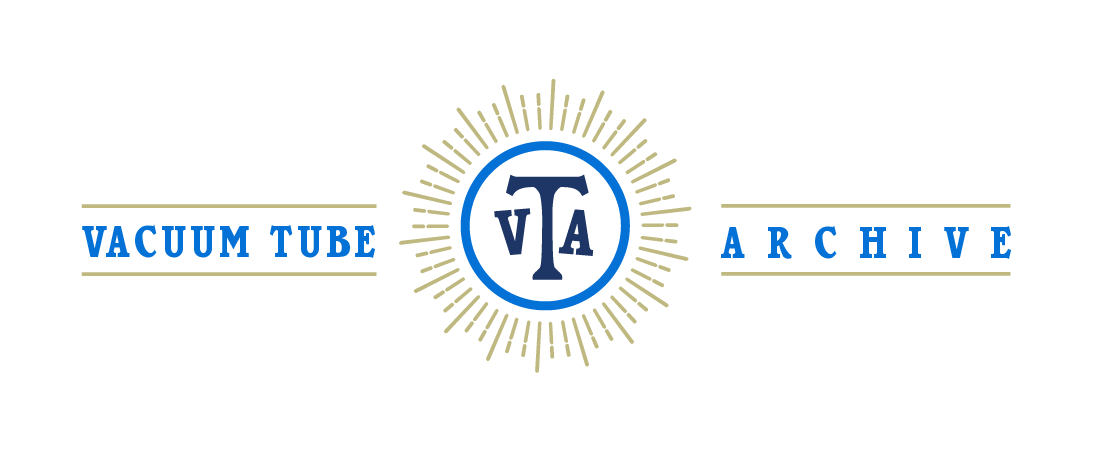
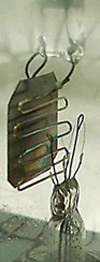
Leave a Reply